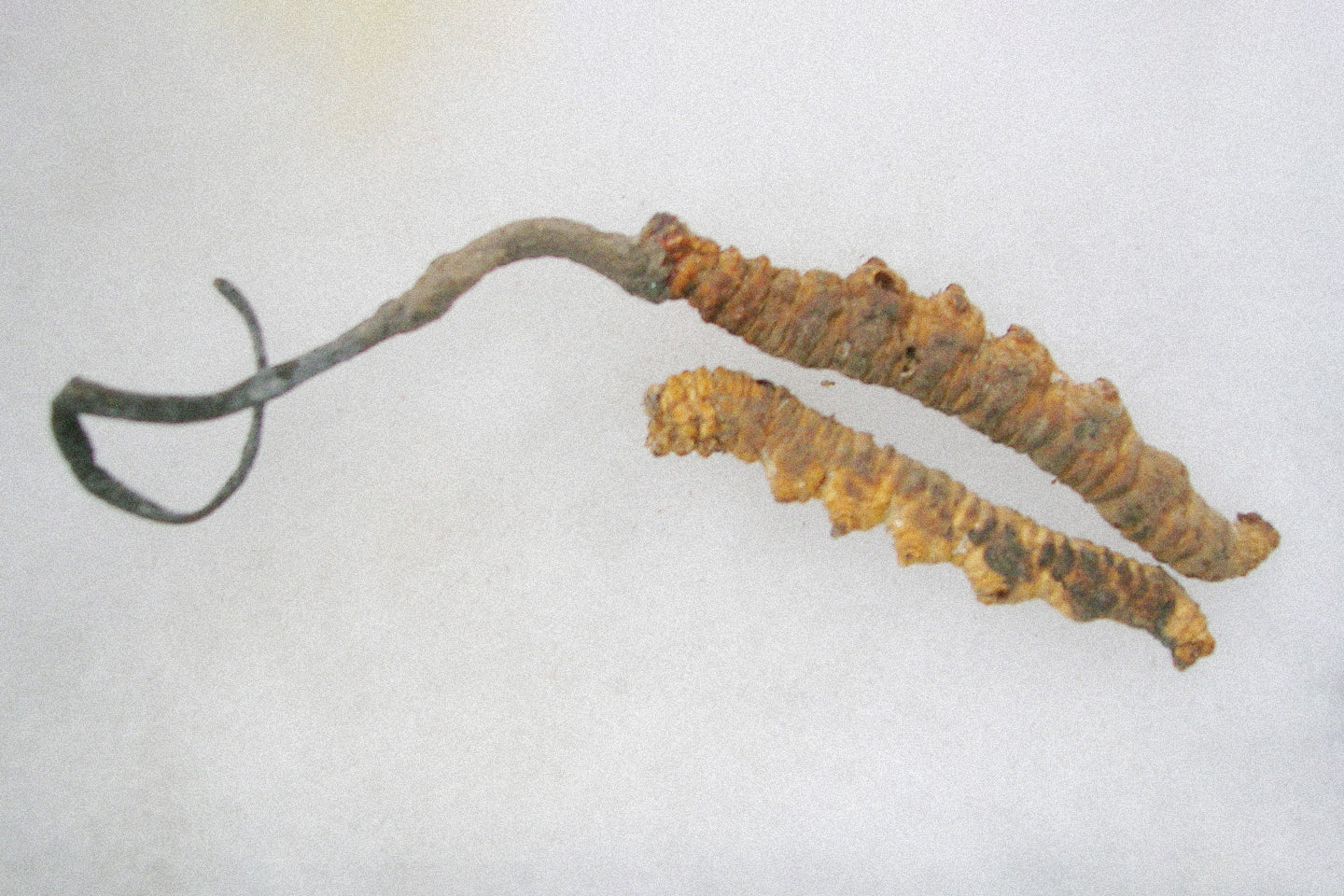
How Cultures Across the Globe Turn Mushrooms into Medicine
When it comes to the healing power of mushrooms, Reishi and Lion’s Mane often steal the spotlight, but for centuries, people across Africa, Asia, the Americas and Europe have relied on local fungi as everyday medicine. In fact, for many communities around the world, mushrooms still get brewed into teas, steeped into tinctures, or pressed into healing extracts—remedies born long before today’s mushroom coffee.
These practices remind us that fungi, humble as they appear, still pack a serious medicinal punch! Our ancestors were clearly on to something, and modern lab work confirms that mushrooms really do heal. Here are a handful of time-tested mushroom remedies that don’t always make the headlines but deserve just as much recognition.
Desert Truffles in North Africa
When springtime comes around, foragers in Algeria, Tunisia, Libya, and Morocco fan out across the Sahara desert’s dried riverbeds in search of underground truffles (Tirmania and Terfezia). For nomadic communities, these fungi are essential to daily life.
Locals shave the truffles into thin strips, sun-dry them, and steep the crisp slices into a tea. The resulting brew is packed with antioxidants that settle the stomach and help herders stay energized on long desert treks. Mixed with a splash of goat’s milk, these fungi become a soothing, antiseptic balm whose terpenoids and phenolic acids clean cuts, calm scrapes, and ease irritated skin.
Himalayan Morels in Kashmir
At 7,000 feet in the Indian Himalayas, morel mushrooms (Morchella elata) sprout beneath cedar and walnut trees. Kashmiri shepherds harvest the caps, then lay them out on slabs to dry. Come winter, the dried mushrooms are boiled into a dark, earthy tea, traditionally drunk at dawn—a remedy believed to chase away chills, bolster liver function, and ease stiff joints. For arthritis, fresh morel caps are smashed into a paste and applied directly to aching knees, wrists, and fingers.
Modern studies credit morels’ many antioxidants (like ergosterol) for powerful anti-inflammatory properties that promote healthy circulation and reduce inflammation.
Sámi and Siberian Chaga
Across Finland and Siberia, villagers prize the black, crusty growth of chaga (Inonotus obliquus). Unlike typical mushrooms, chaga is actually a compacted mass of fungal mycelium that grows on wounded birch trees.. In late winter, chunks are simmered for hours (sometimes overnight), becoming a bitter but healthy brew.
Research shows chaga’s high melanin and betulin levels help fight cellular damage and keep immune systems strong. When a stubborn cough strikes, a double-boiled version (lightly sweetened with birch syrup) becomes a trusted remedy for chest congestion.
Termite Mushrooms: African Folk Medicine
In parts of sub-Saharan Africa, Termitomyces mushrooms are foraged from termite mounds after heavy rains and valued for their nutritional and medicinal properties. In Uganda, Termitomyces are widely consumed as a treatment for yellow fever and other common illnesses. Across Tanzania, the mushrooms are used to ease stomach ulcers and support lactation in new mothers.
Recent lab studies show these fungi are packed with unusually high levels of iron and all nine essential amino acids—nutrients that support blood-cell growth, calm inflammation, and aid muscle repair, among other healing properties.
Nepalese and Tibetan Cordyceps
High in Nepal’s Khumbu Valley (and across the Tibetan plateau), families spend early spring searching for a cordyceps known as the “caterpillar fungus” (Ophiocordyceps sinensis), which grows out of moth larvae. They sun-dry their finds, grind them, and stir a pinch into a salty butter tea or broth.
Locals say the drink keeps their breathing steady and their legs strong on steep mountain climbs. And the science checks out: cordyceps help cells use oxygen more efficiently, resulting in lower heart rates and better endurance after just a few doses.
Ready to feel the power of functional mushrooms? Swap your daily brew for a Madre Mushroom latte or coffee, each packed with a daily dose of six adaptogenic fungi. Every sip draws on wellness practices that have supported communities for centuries and remain valued across the globe.
References:
Boesi, Alessandro. 2014. “Traditional Knowledge of Wild Food Plants in a Few Tibetan Communities.” Journal of Ethnobiology and Ethnomedicine 10, Article 75. https://doi.org/10.1186/1746-4269-10-75.
Bradai, Lyès, Souad Neffar, Khaled Amrani, Samia Bissati, and Haroun Chenchouni. 2015. “Ethnomycological Survey of Traditional Usage and Indigenous Knowledge on Desert Truffles among the Native Sahara Desert People of Algeria.” Journal of Ethnopharmacology 162: 31–38. https://doi.org/10.1016/j.jep.2014.12.033.
Fordjour, Eric, et al. 2023. “Chaga Mushroom: A Super-Fungus with Countless Facets and Untapped Potential.” Frontiers in Pharmacology 14: 1273786. https://doi.org/10.3389/fphar.2023.1273786.
Hammami, Rihab, et al. 2023. “HPLC Analysis, Mycochemical Contents and Biological Activities of Two Edible Hypogeous Ascomycetes: Tirmania nivea and Terfezia boudieri.” Heliyon 9 (3): e14331. https://doi.org/10.1016/j.heliyon.2023.e14331.
Lu, Yangpeng, et al. 2021. “Recent Developments in Inonotus obliquus (Chaga Mushroom) Polysaccharides: Isolation, Structural Characteristics, Biological Activities and Application.” Polymers 13 (9): 1441. https://doi.org/10.3390/polym13091441.
Paloi, Soumitra, et al. 2023. “Termite Mushrooms (Termitomyces), a Potential Source of Nutrients and Bioactive Compounds Exhibiting Human Health Benefits: A Review.” Journal of Fungi 9 (1): 112. https://doi.org/10.3390/jof9010112.
Ramya, Haridas, et al. 2021. “Morel Mushroom, Morchella from Kashmir Himalaya: A Potential Source of Therapeutically Useful Bioactives That Possess Free Radical Scavenging, Anti-Inflammatory, and Arthritic Edema-Inhibiting Activities.” Drug and Chemical Toxicology 45 (5): 2014–2023. https://doi.org/10.1080/01480545.2021.1894750.
Sileshi, Gudeta W., Donatha D. Tibuhwa, and Alec Mlambo. 2023. “Underutilized Wild Edible Fungi and Their Undervalued Ecosystem Services in Africa.” CABI Agriculture and Bioscience 4 (1). https://doi.org/10.1186/s43170-023-00062-0.
Singh, Mrinalini, et al. 2013. “Cordyceps sinensis Increases Hypoxia Tolerance by Inducing Heme Oxygenase-1 and Metallothionein via Nrf2 Activation in Human Lung Epithelial Cells.” BioMed Research International 2013: 569206. https://doi.org/10.1155/2013/569206.
Tietel, Zipora, and Segula Masaphy. 2018. “True Morels (Morchella)—Nutritional and Phytochemical Composition, Health Benefits and Flavor: A Review.” Critical Reviews in Food Science and Nutrition 58 (11): 1888–1901. https://doi.org/10.1080/10408398.2017.1285269.
Photo credit:
Cordyceps sinensis fruiting from caterpillars. Photo by L. Shyamal, via Wikimedia Commons. Licensed under CC BY-SA 3.0.